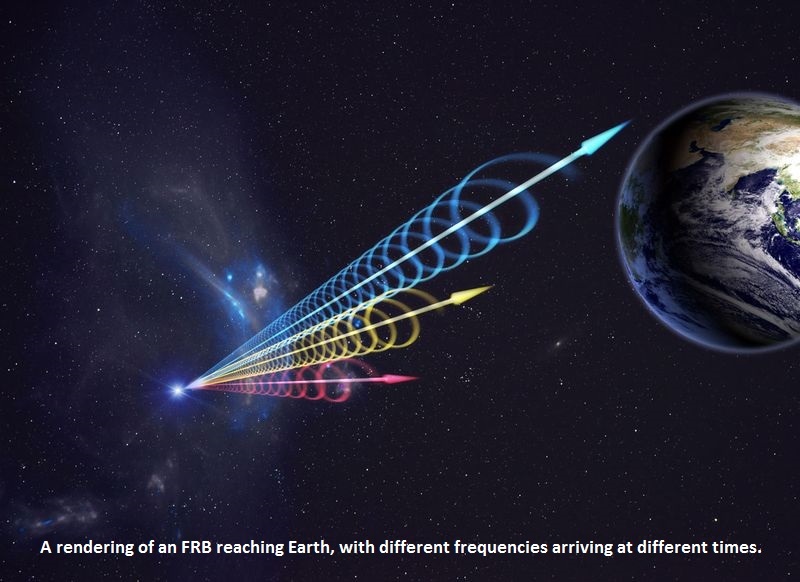 English
English


dynamitenews.com
Washington D.C/ 5 January 2017. For the first time, scientists have nailed down a source of fast radio bursts (FRB), one of astronomy's most enigmatic phenomena.
A dim dwarf galaxy 2.5 billion light years from Earth is sending out the mysterious millisecond-long blasts of radio waves, researchers reported on Wednesday in Nature and Astrophysical Journal Letters. The bursts traverse vast expanses of time and intergalactic space before reaching our planet.
“This really is the first ironclad association of a fast radio burst with another astronomical source, so it’s a pretty huge result,” said Duncan Lorimer, an astronomer at West Virginia University who reported the first detection of a fast radio burst (FRB) in 2007.
FRBs are extremely brief pulses of radio waves, flaring with the power of about 500 million suns. Scientists have recorded just 18 of these signals, but studies suggest there could be as many as 10,000 a day. Their unpredictability makes them difficult to spot, and they appear to come from all over the sky.

Many scientists think the bursts are emitted by distant neutron stars, the super-dense embers of exploded suns. But some believe they must originate in our own galaxy. Still more suggest that FRBs could be caused by cataclysms like a supernova or a collision of two stars. This last theory was compelling because most FRB detections were one-off events — astronomers never spotted more than one flare from a single source.
In spring, researchers looking at archival data from Arecibo Observatory — one of the largest radio telescopes in the world — found evidence that bursts were repeatedly coming from the same spot in the sky. Each one carried the telltale signature of an FRB: the high frequency radio waves arrived first, followed by successively lower frequencies, which get stretched out and slowed down as they travel across space. The signal, called FRB 121102, was definitely repeating, and it certainly traveled a long way to reach Earth.